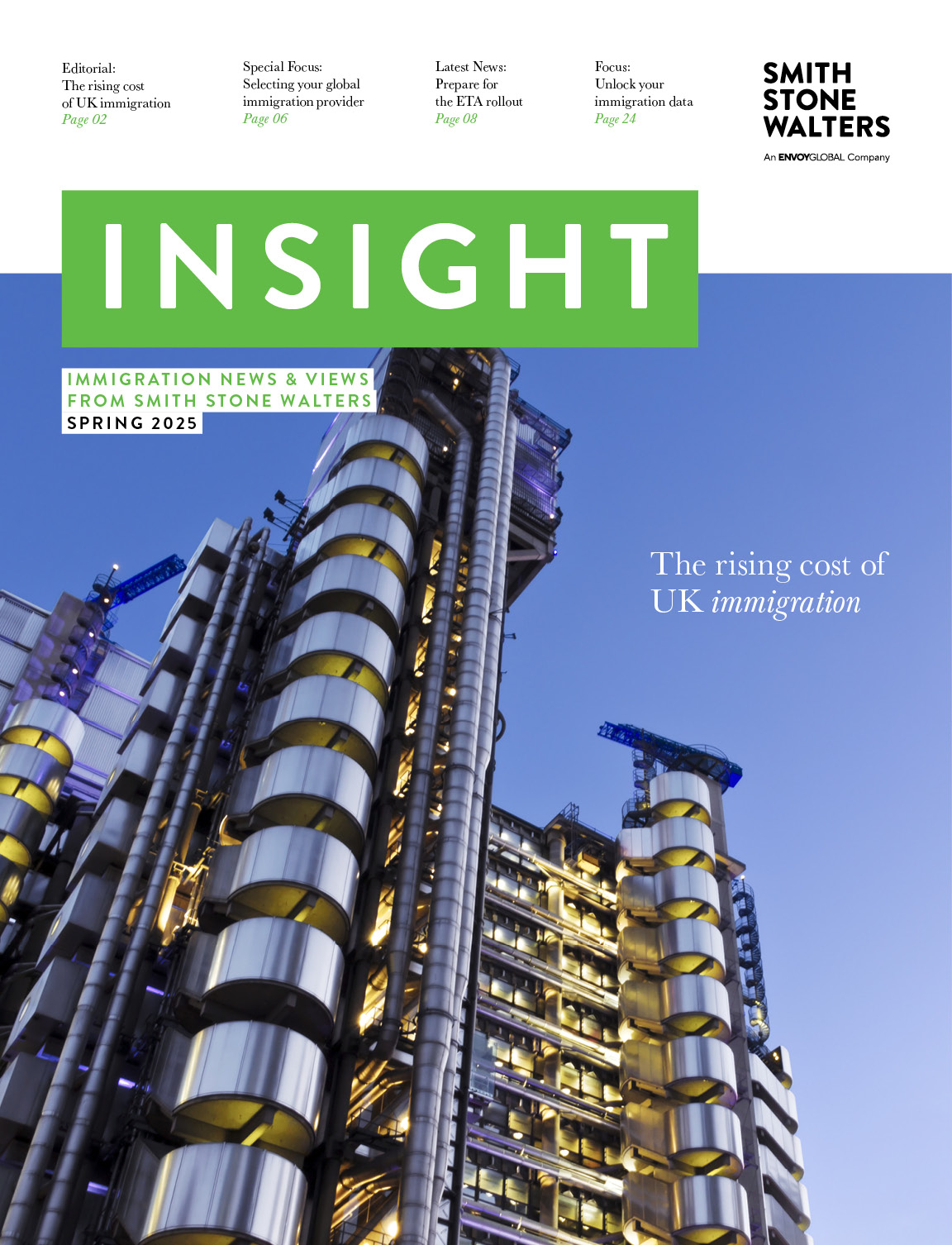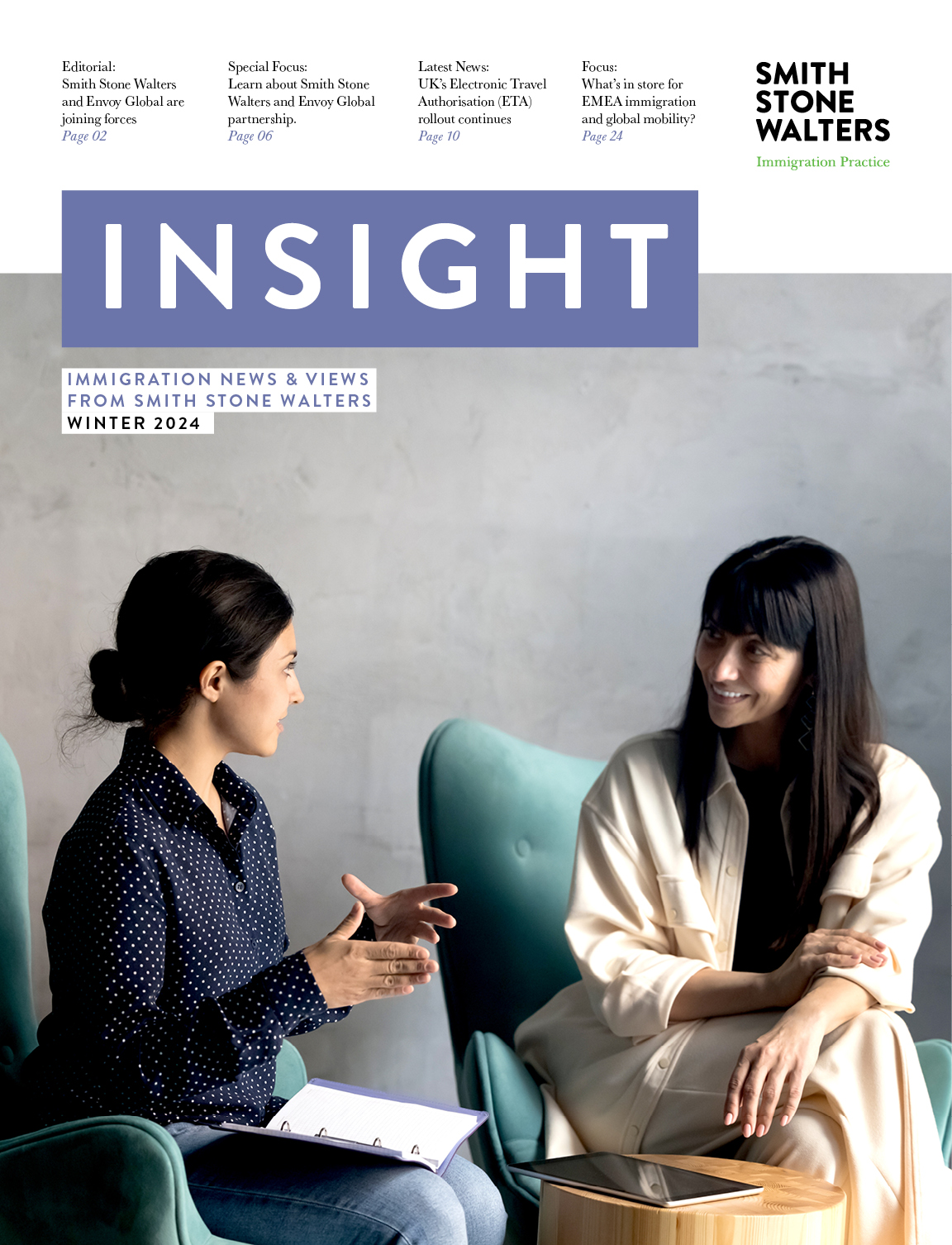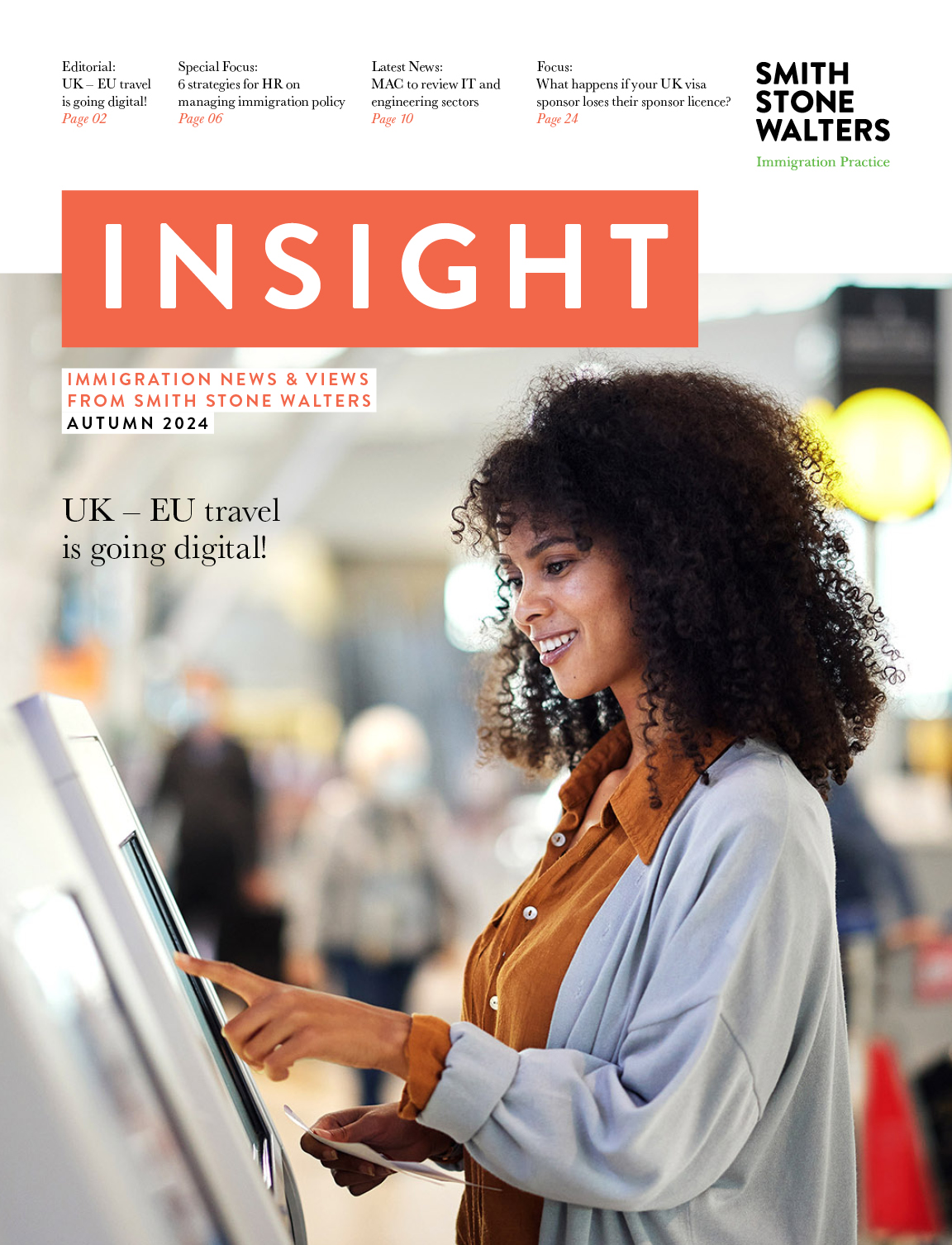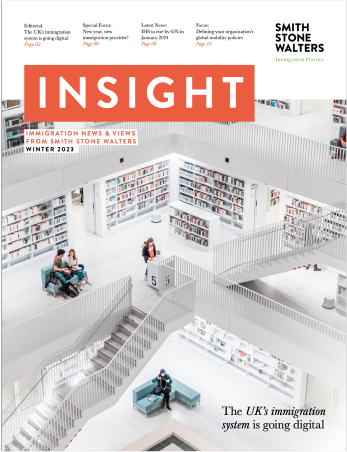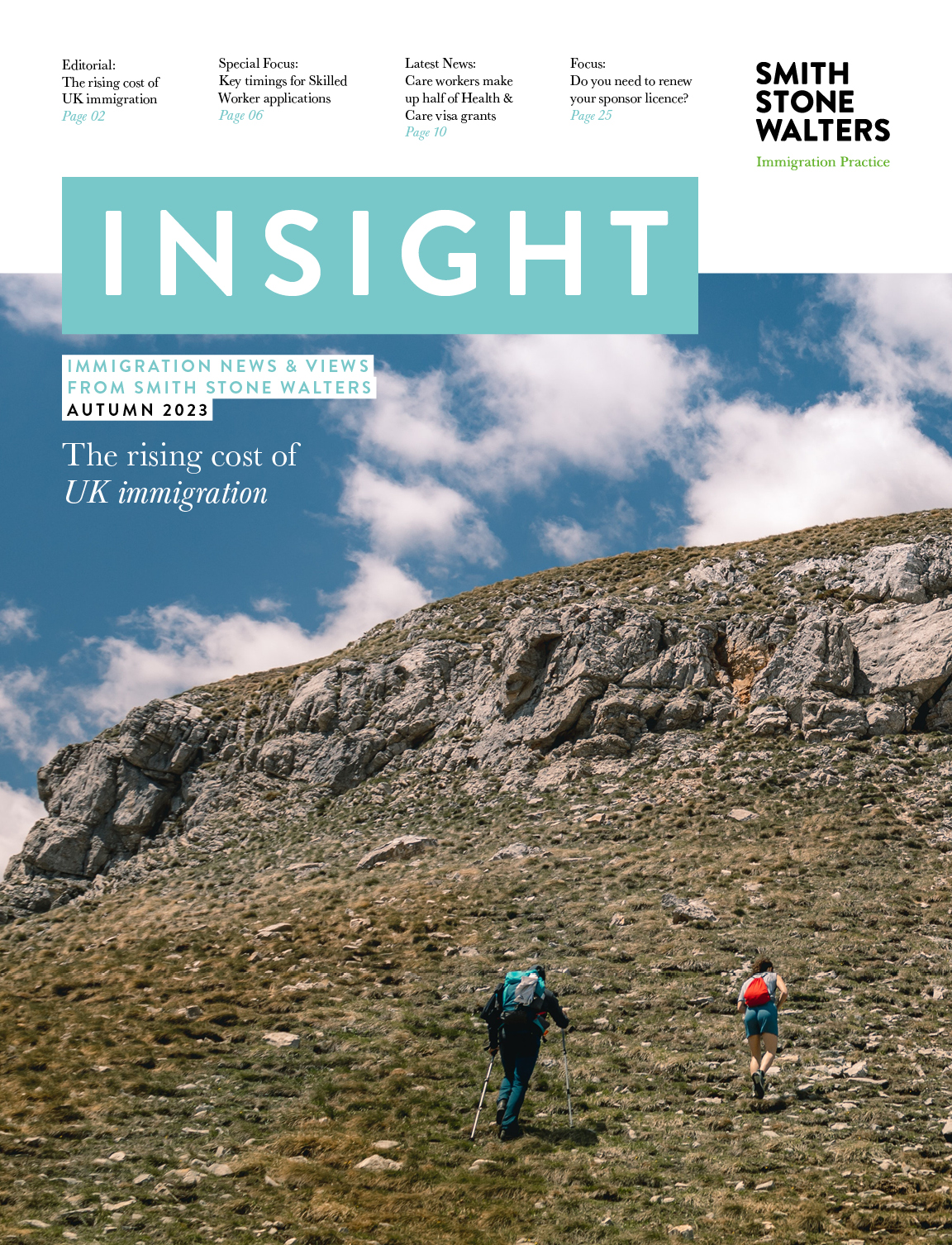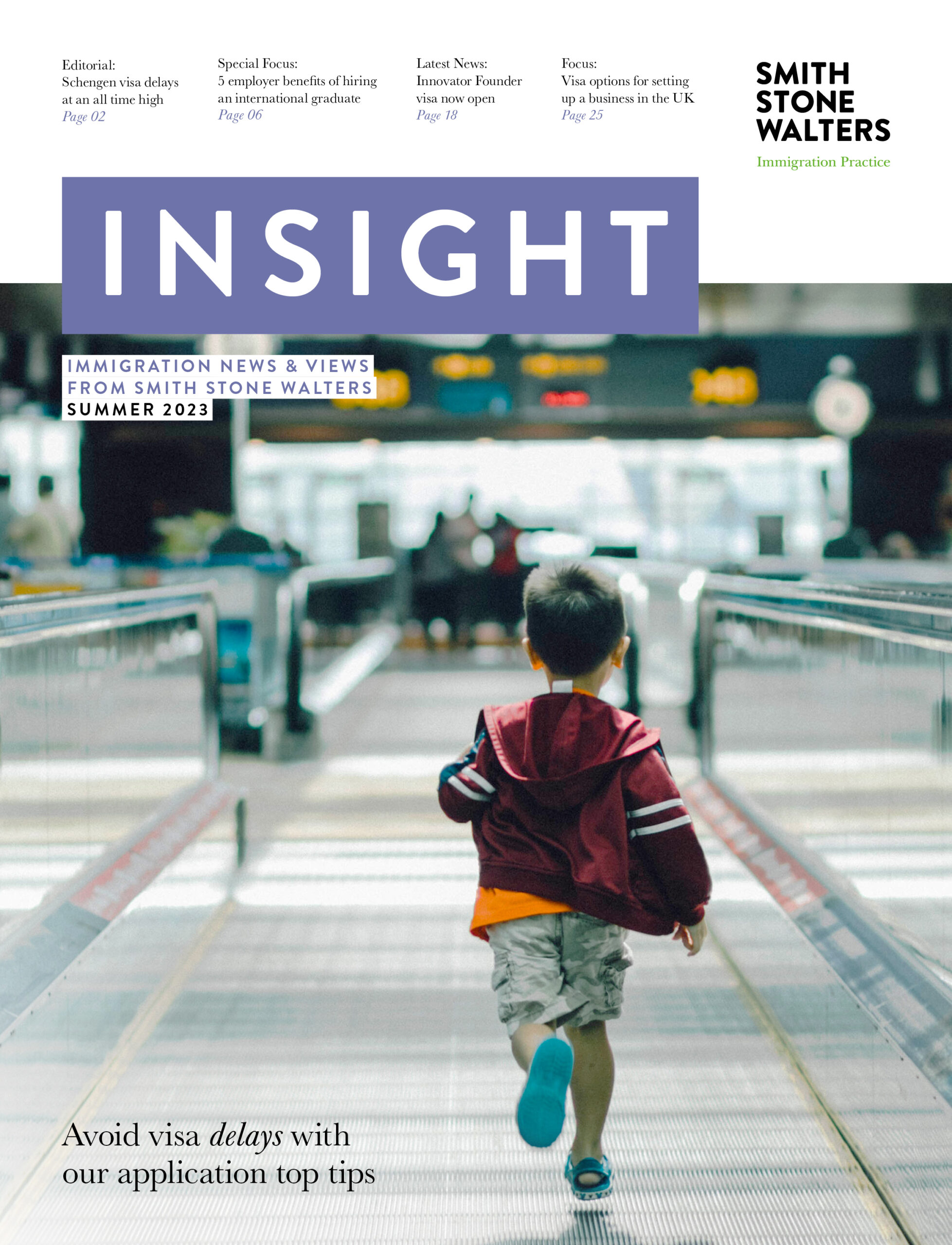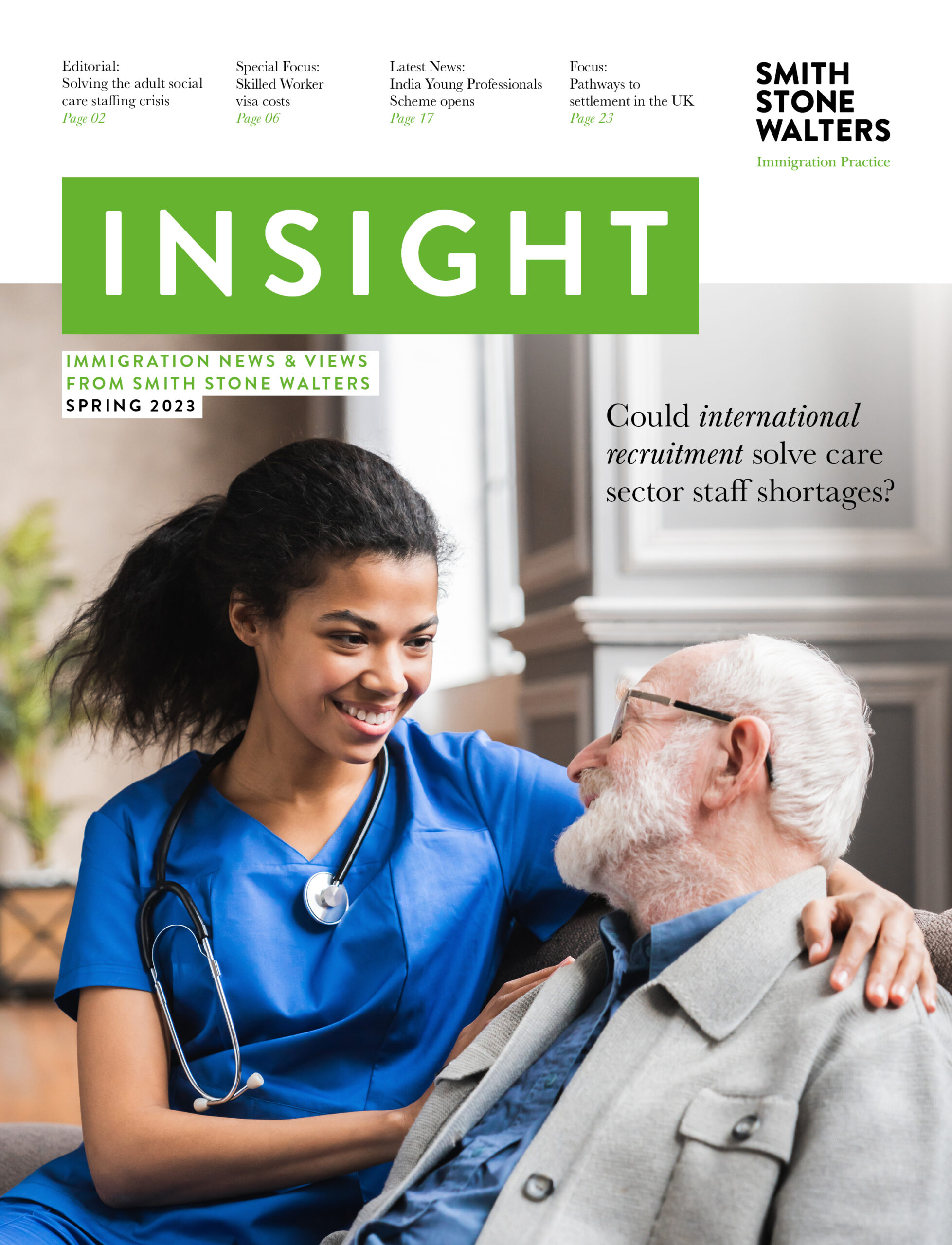What we know so far about the Global Business Mobility visa
Back in March 2021, Chancellor Rishi Sunak announced in his Budget speech that the government would introduce ambitious immigration reforms to help UK businesses attract the best and most promising international talent.
The planned reforms include the launch of a new ‘Global Business Mobility visa’, set to be introduced by Spring 2022. The route will be aimed at overseas businesses wishing to establish a presence in or transfer staff to the UK. It will build on the framework of the existing Intra-Company routes, and is part of a series of planned improvements in the field of business mobility.
Further details set out by the Home Office and seen by Smith Stone Walters this week indicate what the new route might look like in practice, including how existing routes may be affected when it is launched.
Overview of the Global Business Mobility visa
The Global Business Mobility visa will consolidate Intra-Company Transfers (ICTs) and other business mobility visas into a single route. The new route will enable overseas businesses to temporarily send an employee to the UK for a specific corporate purpose that could not be done by a resident worker.
The assignment types will be grouped into five categories:
- Senior or specialist worker
- Graduate trainee
- UK expansion worker
- Secondment worker
- Service supplier
The route’s main requirements will be based on existing UK immigration principles, including:
- UK businesses receiving workers from overseas will need a sponsor licence
- Jobs must meet the appropriate skill and salary thresholds
- Workers must be existing employees with a minimum length of employment overseas
- Assignments will be temporary but flexible, and workers will be able to switch into permanent routes
- There will be no English language requirement.
Global Business Mobility sponsorship
Like many of the other work routes under the points-based system, the Global Business Mobility visa will require employers to sponsor the workers they are bringing in under this route.
The route may be used by overseas businesses with or without an established UK presence, and will accommodate a range of scenarios, including:
- An overseas business with an established presence in the UK sending an assignee to the UK because:
- They have specialist skills that are required in the UK branch of the business for a specific purpose
- They are a senior executive who is required to work at the UK office
- They are a graduate trainee on a UK placement as part of a structured training programme.
- An overseas business with no UK presence sending an assignee to the UK because:
- They are a specialist or senior employee who is on assignment as part of the UK expansion of the business
- They are on secondment to a UK business for a specific purpose (such as to transfer knowledge related to a high value import or export)
- They are a service supplier travelling to the UK to deliver a service in line with a UK trade commitment (such as GATS).
Applicants will need to demonstrate that they have a receiving business which will provide sponsorship, a sending business and that there is a business relationship between the two entities (such as common ownership, a contract for goods or services, or plans for a UK expansion).
How will this impact existing routes?
Based on the details released so far, the new route could really shake things up in terms of overseas transfers and secondments to the UK, and could see the removal of several existing categories.
The ‘UK Expansion Worker’ category of the Global Business Mobility visa looks set to replace the existing Sole Representative visa route. The Home Office suggests that the new category offers a number of benefits over the existing unsponsored Sole Representative route, including:
- The ability to send more than one worker
- Access to Sponsorship Management System to manage assigned workers
- Streamlined transition into sponsorship system for other assignment types.
The existing Intra-Company Transfer (ICT) route is also likely to fall under the scope of the new Global Business Mobility route, for overseas businesses transferring staff to a UK branch of the business. However, of the five assignment types that the Home Office has identified so far, the ‘senior or specialist worker’ category appears to be the most relevant for this purpose.
Currently, the eligibility requirements for an ICT visa simply state that the worker must have been employed by the sending business for at least 12 months, and their role in the UK will be skilled to at least RQF level 6 with a salary of at least £41,500. It remains to be seen whether the Home Office will introduce stricter eligibility criteria to determine whether an assignee qualifies as ‘senior’ or ‘specialist’.
UK based businesses wishing to hire a new migrant worker from overseas will need to continue using the Skilled Worker route.
UK immigration reforms in 2022 and beyond
Now that the UK’s post-Brexit immigration system is in full swing, the Home Office is turning its attention to ways it can make the system easier for users to understand and navigate.
Alongside the launch of the Global Business Mobility visa and other bespoke routes for highly skilled migrants, the Home Office plans to overhaul the sponsorship process to help businesses access overseas talent quickly and effectively.
The ‘Sponsorship Roadmap’ sets out key reforms the government intends to introduce to the sponsorship system this year, in 2022 and beyond.
Prepare your business for hiring talent
If your business intends to recruit skilled workers from overseas, whether using the new Global Business Mobility route or the Skilled Worker route, your business must hold a valid sponsor licence.
Smith Stone Walters is experienced in helping businesses of all sizes successfully secure sponsor approval. To find out how we can assist, please contact us today.


